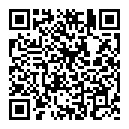Lecture Title: Misconceptions of Chinese to English Translation in Today’s Domestic Mainstream
Lecturer: Professor Huang Shaozheng
Time: Wednesday, October 16, 13:30
Location: Room 326, Foreign Language Building
Lecturer Profile:
Huang Shaozheng is a professor of Lu Xun College of Literature, a translation scholar, and a member of the Chinese Writers' Association. Since 2007, he has been engaged in the translation and research of difficult Western texts from English to Chinese and from Chinese to English.
Since 2010, he has been the chief interpreter, translator, and translation project coordinator for the Qinghai Lake International Poetry Festival, Qinghai Tent International Poetry Roundtable, and high-end international poetry exchanges in Xichang, Chengdu, Luzhou, Zunyi, etc.
Coordinator of the International Writing Program (sponsored by the Lu Xun Academy of Literature) for the past sessions of the Chinese Writers' Association to date (the first session 2017,10).
2013 Chinese to English translation of Writing for Land and Life was included in the Classic China International Publication Project, translated into French, German, Spanish, Serbian, Romanian, and Arabic.
In 2014, the English edition of Gideon's literary lectures was published by Uhuru Design Studio in association with His Royal Heritage in South Africa. Publications in Cape Town.
2016 Co-translation with Sinologist Danli Mei, From Snow Leopard to Mayakovsky, published by Kalatumba Press in San Francisco, USA.
In 2015, he published the New Testament, the first literary translation of the Bible in Chinese for 100 years.
In 2011, he retranslated Kahlil Gibran (The Prophet, Sand, and Foam, Revised Edition, English to Chinese).
In 2012, the publication of The Becoming of Translation (Guangxi Normal University Press, Translation Studies).
2013, 20 translations of Gideon's literary and cultural lectures, Writing for the name of Land and Life (In the name of Land and Life); Foreign Studies Society edition.
2015 retranslation of the Bible New Testament (Taiwan Sihang Culture Publishing Company, English to Chinese translation); 2018, Mountains that Humble and Hold Us in Awe (Chinese to English translation, 45 Gideon's literary speeches) Anhui Literature and Art Publishing House (October)
Lecture Introduction:
Chinese to English translation in China has long been plagued by the so-called Chinese English (state-sponsored, Chinese translation, self-produced). The so-called Chinese English is commonly understood as a variant of English with Chinese vocabulary, grammar, and expression habits. Second language studies generally believe that learners are influenced by their native language and apply Chinese rules and habits, and the expressions that appear in English communication are not standardized or not in accordance with English cultural habits.
The author believes that, based on the basic principles of modern communication science, translations that are not readable and not acceptable to the target language audience under weak cultural constraints are Chinese English.
The faithful and smooth Chinese to English translation model, which is based on the combination of Yang Xiangyi and Dai Naidi of Foreign Language Bureau and Zhang Peiji and Liu Shicong of universities, has become the mainstream, which overemphasizes faithfulness at the expense of readability and simplifies and shrinks the syntactic-lexical-rhetorical complexity of the target language. Entering the AI era, several representative figures in universities ignore the epoch-making breakthrough of translation software based on artificial intelligence (based on big data and neurophysiological science) (which is already more comfortable in handling information texts) and continue to advocate misleading the public and students.
Late Qing Dynasty Yan Fu highly summarized the standard of broad translation, Xinda Ya. Since '49, domestic authoritative foreign language publishing units as well as the most popular translation textbooks have reduced this issue to faithful fluency and abandoned the (elegant) aesthetic pursuit. This is where the whole etiology lies.
Contemporary Western translation studies are based on two epistemological foundations, Platonism (faithfulness to the original), which traditionally emphasizes the origin, and Saussurean structuralism (energy-reference relations are arbitrary), which focuses on function. This has given rise to the textual taxonomy that guides translation practice (texts can be roughly divided into informational texts that refer to things, such as mathematical physics and rice cooker manuals, and aesthetic texts, or literary texts, that create context, render atmosphere and express emotions) and a binary translation approach based on textual taxonomy: informational texts that achieve meaning are letters, while aesthetic texts that are not elegant are not letters, and not elegant are not translations.


